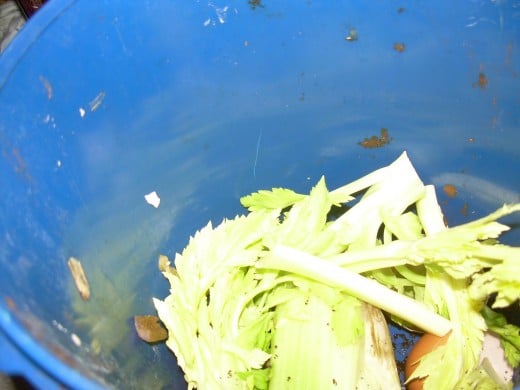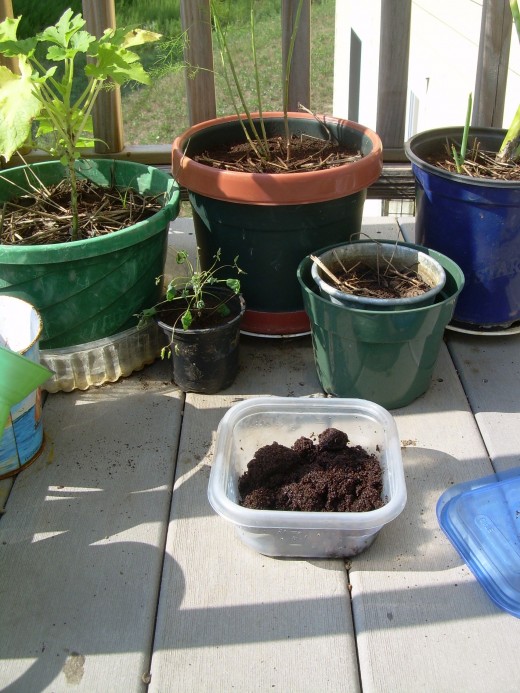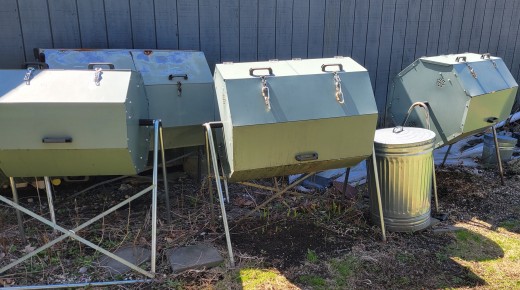Recycling Saves Both Money and Lives
Pictures of organic/sustainable living in action:






Giving back to nature means leaving a healthy planet for our children
The idea of recycling has caught the imagination of the global community and that is for a good reason. The looming threat of global warming has lit a fire under many people for preserving our resources and reducing the amount of energy we consume. More people are using less energy by spending more time outside, getting to know their families and neighbors, and planting more trees. How radical! They are also reusing more of their resources before recycling them or throwing them away, which saves the tax dollars that pay for dumping large amounts of garbage in landfills, to put the money toward more practical uses, such as housing for citizens.
Cohousing communities have bought property that used to belong to churches or other organizations for creating their villages so that less habitat is cleared for development. Those habitats are preserved for the creatures that depend on them for the continuation of their species.
CLOTHES
From clothes to bags to food, many of our treasures can be recycled, transformed for a new purpose. The paragraphs below describe the ways in which we can improve the quality of our own lives while also preserving the quality of others' lives, by recycling our clothes and buying clothes recycled by others.
When our clothes no longer fit our sense of style, we can give them away to good will stores so that others who may need new clothes have a chance to buy them at more affordable prices than they may be sold for in boutique or department stores.
If we cannot bear to part with a particular beloved garment or two, we can cut them up and sew the scraps into quilts that will keep our loved ones warm. They may then inspire a memorable evening of inter-generational storytelling around the clothes used to make them. This will be more satisfying to both the giver and receiver than buying another blanket at the store.
BAGS
It is good that grocery stores are willing to take our plastic bags and reuse them to hold food for future customers. It is even better to keep a stash of reusable bags made from fabric that is more easily broken down back into the earth than plastic. My family uses reusable bags until they fall apart. Stop and Shop gives us 5 cents for each bag we bring and fill, each time we shop there. Between shopping trips, we use these bags to carry our recyclables to the single-stream container they are kept in until they are taken away to the recycling plant. This reduces the amount of bags we buy for different purposes, and the cloth grocery bags cost only $1. In this manner, they save us money and they keep the environment livable for other sentient creatures.
CONTAINERS
Recyclable plastic containers are made in various sizes. Some are made of rubber and others of a durable plastic. They beat plastic snack bags for re-usability and as a result, the tall kitchen garbage bag fills more slowly than it used to. Plastic bags that are not released into the environment in any way cannot pose a threat to the other creatures that we share our planet with. Washing the sturdier set of containers and bringing them to work or on picnics spares the natural world from the needless suffering that results from the careless release of plastic bags into the environment, and other materials that do not break down very well. Reusing the containers will eliminate or reduce significantly the amount of boxes of food storage bags you will need to buy, and thus save you money while you are saving the lives of many creatures who will survive due to remaining in their natural habitat.
Glass jars are also a valuable type of container to reuse. Food that is stored in them tastes better because there are no chemicals like those in plastic to leech into your food. Storing leftover food from a meal is one way of recycling them, as well as storing homemade jams or jellies, pickles, salsa, or applesauce from a home garden harvest. They can also be used to store dry ingredients such as flour, sugar, cornmeal or peas and beans. It is best to make sure they are sanitized in a dishwasher before reuse.
STYROFOAM
Styrofoam is a material that not all recycling centers take. This is true where I live. In that case, It can be washed thoroughly and reused for craft projects. I cut it up into squares for my daughter and she "carves' designs on them with a pen to use them as stamps to decorate homemade cards and make pictures with. A Styrofoam tray could be wrapped in construction paper, or scrapbook paper with a fancy design, and used as a base for a diorama.
FOOD
The final frontier of recycling is the kitchen. Our food scraps carry essential nutrients for the soil in our gardens. Growing more of our own food may take extra effort, but it tastes better, smells better, and is healthier for us than store-bought food. The food sold at grocery stores travels a great distance to arrive at your table and loses much of its nutritional value in the process. Instead, growing our own food means that we spend more time outside, exercise as we create our gardens, interact with our neighbors, and eat our food straight from the source.
What we do not eat can be returned to the earth and combined to create a nutrient-rich soil for growing plants, trees, flowers, etc. This is called composting. There are compost tumblers for sale that help break down the materials more rapidly than heaping it onto a pile and then having to turn it all with a shovel.
The food scraps are called "green" materials. Other items such as coffee grounds, hay, paper bags, and plain paper towels and napkins are all "brown" materials. Both materials are necessary for creating healthy compost pile. If you don't have a tumbler, they need to be alternated in your pile to allow all the microorganisms that process those materials to digest them well. The pile is turned over with a shovel until it becomes a dark soil for use in our gardens, trees, and house plants.
In turn, the edible plants that we grow using composted materials as part of our soil mix will be richer in both flavor and antioxidants than those bought in stores. They will keep us healthier in the long run, and perhaps support our immune systems to a great degree against cancer.
Web Pages Related to Recycling:
- Recycling - Earth911.com
Guide to local resources including recycling centers, how to recycle, pollution prevention and how help protect the environment. - Recycling Facts - A Recycling Revolution
Recycling facts for folks who thrive on information - Recycling - Wikipedia, the free encyclopedia
A full-page history of the recycling movement, including images promoting the practice over the past decades. - Composting: a guide to making compost at home
Composting Fundamentals: How to make organic compost, build your own composter or buy one online. From beginners to experts this page provides composting information and tips for successful home composting. - How to Compost.org
From beginners to experts this web site is designed to provide composting information and links to other people involved in all forms of composting. From home composting to compost tea, compost toilets, large scale composting, vermi and compost use.
WATER
Did the section above mention that food was the final frontier of recycling? Water can also be recycled so that it may be conserved for times of drought. Rainwater can be collected into cans, pots, or barrels with a reasonably high storage capacity. On the next sunny day, the water can be used to irrigate your garden. Our community uses well water, so recycling water by collecting it on rainy days makes a big difference. Some people place extra piping from their roof drains to their gardens, which saves both time and energy for the garden. Planting a Rain Garden that will thrive with very little watering adds beauty to your yard and conserves water for higher priority use, such as drinking.
Children learn through their experiences ~

CONCLUSION
Recycling keeps us and our world healthier than if all of that garbage ended up in landfills. It also promotes a sense of community when neighbors share resources with each other or with families who cannot afford to buy new clothes at department stores. Scraps of worn clothing torn up as rags saves trees because they reduce the amount of paper towels that are needed for cleaning.
Gardening and composting promote longevity through the movement involved in both activities, and eating the best food we can give our bodies. The food is fresher and the scraps that are not eaten are returned to the earth so that an abundance of new food will grow in our gardens the following season.
If your puppy or dog shows signs of potential aggression (lunging, barking, growling, snapping, biting), please consult with a dog behavior professional for direct in-person guidance. Articles, videos, and general information provided online are not meant to replace in-person training/instruction. By using this service, you are waiving any liability claims or other types of claims related to any of your dogs' behaviors against you or others.
© 2010 Karen A Szklany








